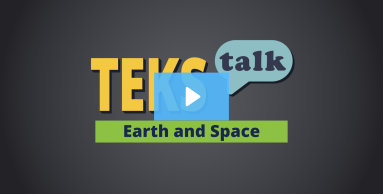
Knowledge and Skills Statement
The further explanation is designed to be a resource for educators that helps them better understand the topic their students are learning. Further explanations may be written at a more complex level than would be expected for students at the grade level.
The model of plate tectonics builds on the concept of continental drift, an idea developed during the first decades of the 20th century. Plate tectonics came to be generally accepted by geoscientists after seafloor spreading was validated in the mid-to-late 1960s.
Earth's lithosphere, which is the rigid outermost shell of a planet (the crust and upper mantle), is broken into seven or eight major plates (depending on how they are defined) and many minor plates. Students should know that the relative motion between two plates determines the type of boundary: convergent, divergent, or transform. Earthquakes, volcanic activity, mountain building, and oceanic trench formation occur along these plate boundaries (also called faults). The relative movement of the plates typically ranges from 0 to 10 cm annually.
Tectonic plates are composed of the oceanic lithosphere and the thicker continental lithosphere, each topped by its own kind of crust. Along convergent boundaries, the process of subduction, or one plate moving under another, carries the edge of the lower plate down into the mantle; the area of material lost is roughly balanced by the formation of new (oceanic) crust along divergent margins by seafloor spreading. In this way, the total geoid surface area of the lithosphere remains constant.
Research
Poli, Maria-Serena, and Marco Capodivacca. “Investigating Continental Margins: An Activity to Help Students Better Understand the Continental Margins of North America.” The Science Teacher 78, no. 9, (2011): 48–51. http://www.jstor.org/stable/24148437
Summary: "Investigating Continental Margins: An Activity to Help Students Better Understand the Continental Margins of North America" explains the land features formed at a few North American faults and what actions are happening with plate tectonics.
Research
Mulvey, Bridget, and Randy Bell. “A Virtual Tour of Plate Tectonics: Google Earth for Inquiry Investigations.” The Science Teacher 79, no. 6 (2012): 52–58. http://www.jstor.org/stable/43557535
Summary: "A Virtual Tour of Plate Tectonics: Google Earth for Inquiry Investigations" explains how technological modeling systems can be used to make observations and collect data about phenomena related to plate boundaries and geographic formations.
